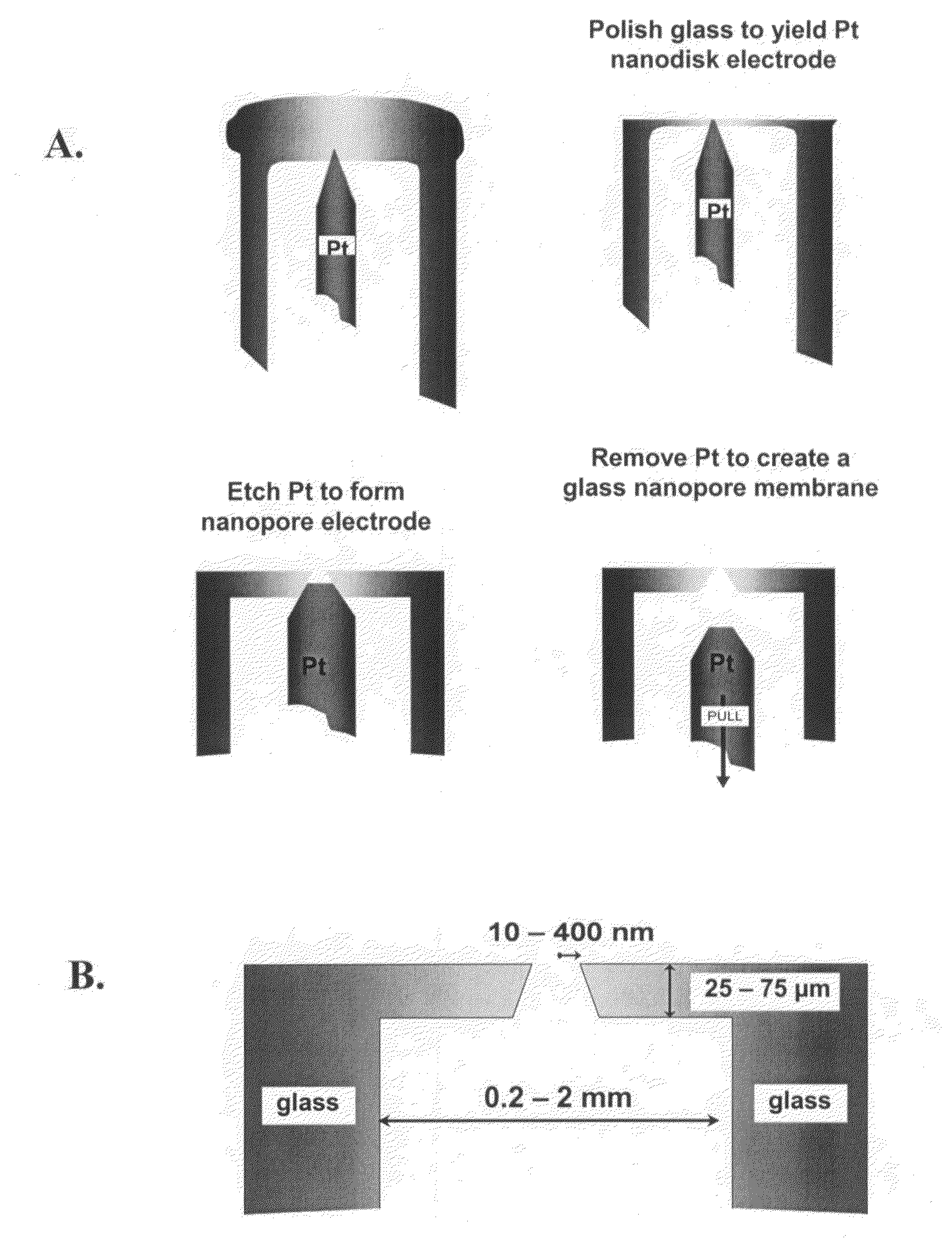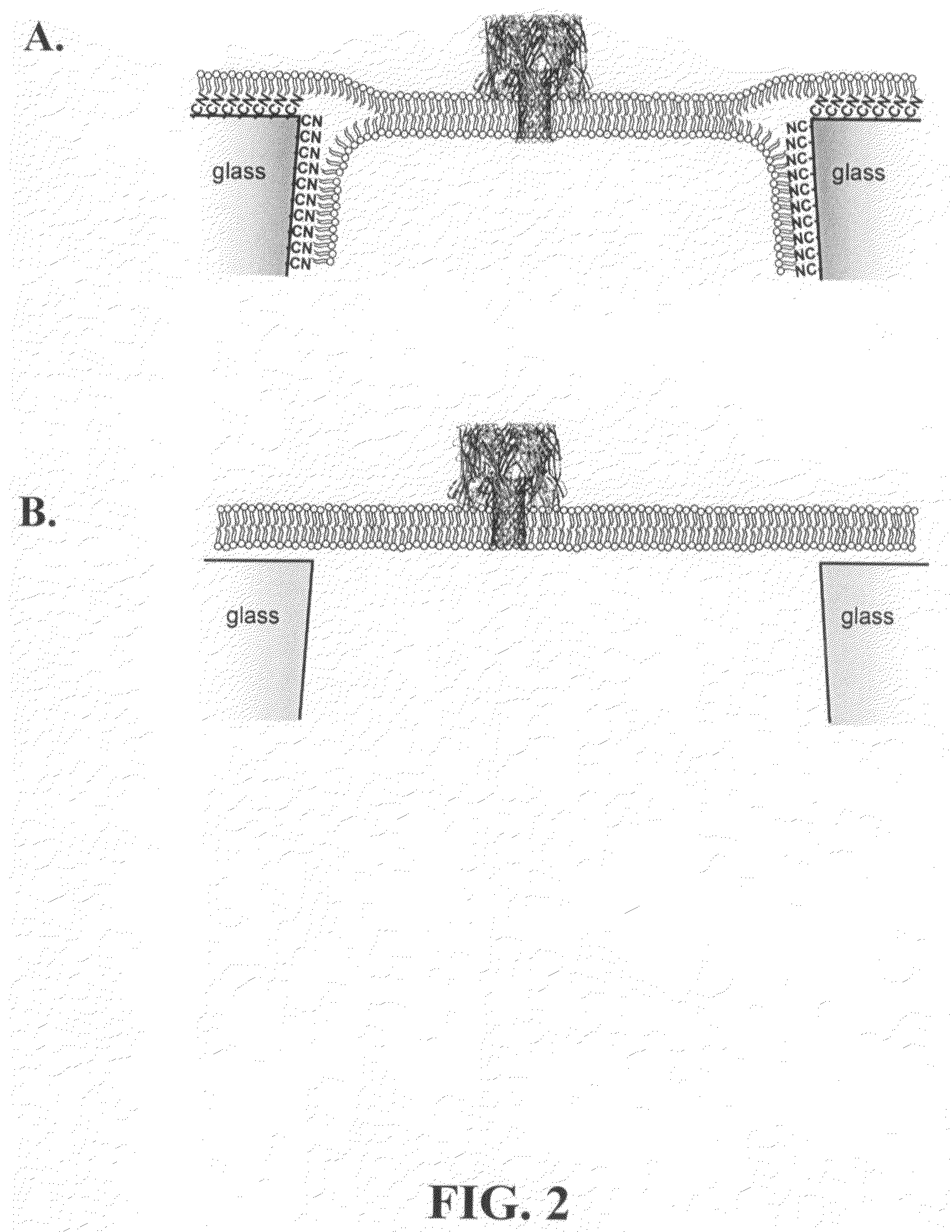Nanopore platforms for ion channel recordings and single molecule detection and analysis
a technology of nanopores and ion channels, applied in the field of nanopore platforms, can solve the problems of unstable bilayers, easy failure of lipid bilayers spanning the orifices of teflon or other polymer-based membranes, etc., and achieve the effect of increasing electrical conductivity
- Summary
- Abstract
- Description
- Claims
- Application Information
AI Technical Summary
Benefits of technology
Problems solved by technology
Method used
Image
Examples
Embodiment Construction
[0054]Provided is a nanopore device for single-molecule detection, DNA sequencing, drug screening or other suitable applications, and preparation and use thereof. An advantage for such a nanopore device is that the device is very stable to mechanical vibrations and electrical disturbances allowing the sensing entity to be employed in the field or as part of an implantable medical device. A second advantage is that experiments show that bilayer membranes formed over nanoscale orifices are stable and do not undergo the continuous flow processes that limit the lifetime of bilayers on conventional TEFLON® supports. A third advantage is that an externally applied pressure can be used to control ion channel insertion and removal. A fourth advantage is that an increased bias voltage can be applied across the membrane to improve the measurement accuracy. A fifth advantage is that the capacitance of the bilayer region over the orifice is reduced to a negligible value, thereby reducing the sh...
PUM
| Property | Measurement | Unit |
|---|---|---|
| radius | aaaaa | aaaaa |
| thickness | aaaaa | aaaaa |
| pore constriction diameter | aaaaa | aaaaa |
Abstract
Description
Claims
Application Information
 Login to View More
Login to View More - R&D
- Intellectual Property
- Life Sciences
- Materials
- Tech Scout
- Unparalleled Data Quality
- Higher Quality Content
- 60% Fewer Hallucinations
Browse by: Latest US Patents, China's latest patents, Technical Efficacy Thesaurus, Application Domain, Technology Topic, Popular Technical Reports.
© 2025 PatSnap. All rights reserved.Legal|Privacy policy|Modern Slavery Act Transparency Statement|Sitemap|About US| Contact US: help@patsnap.com



